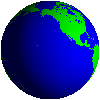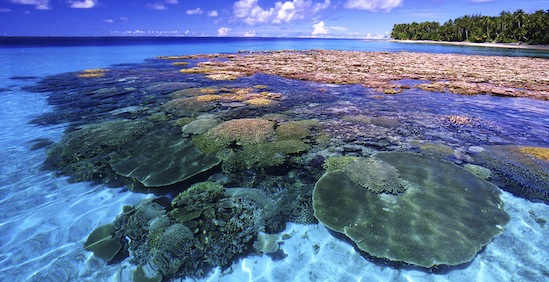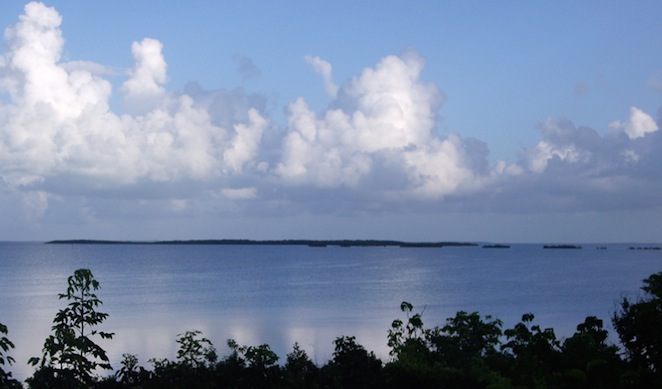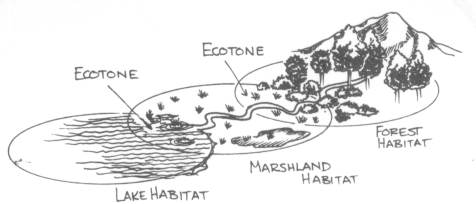 Coral
Keys Coasts
Coral
Keys Coasts
"The reef was a living thing . . . . for only the surface is occupied by living polyps."
“Knowing this past, we can see in the present a repetition of the pattern of recurrence of earth processes of an earlier day.”
Rachel Carson, The Edge of the Sea, p. 196-97, 201.
The tropical sea's possess interconnected margins.
The shoreline tropical oceans have fascinated naturalists from Charles Darwin and Louis and Alexander Agassiz to Rachel Carson because of a curious blend of flowering grasses, flowering forests and underwater coral reefs all bound together in a productive unit by the warmly translucent sea penetrating an otherwise less productive landscape. She informed the public of "The living coral coasts of the world," are capable of building "massive structures of the reefs. . . only where the coral animals are bathed by waters warm enough to to favor secretion of their calcareous skeletons." (.p. 191-192) And in a evocative reminder of the planet's larger context, built by the the coral animals, she wrote "the shaping hand is the the hand of the sea." (p.193)
Brown, Tompkins and Adger also agree that "Coral reefs are important component of coastal ecosystems, providing a range of valuable economic, social and environmental services at the local, national, regional, and even international levels." (p. 14) They insist that "Reefs also provide socially beneficial ecological services" that can best be summed up as the rock lobster "fishery is dependent on the health of coral reef systems." (Ibid.) Numerous research shows that mangroves, which are salt water forests, extensive sea grass beds, which are flowering grasses, and reefs are distinct habitats that work in unison to sustain nearshore tropical fisheries.
Carson describes "Dark patches like the shadows of clouds are scattered over the inshore shallows of the reef flats. Each is a dense growth of sea grass pushing up flat blades through the sand, forming a drowned island of shelter and security for many animals." There is, as she points out a diversity of grasses "About the Keys these grass patches consist largely of stands of turtle grass with which manatee grass and shoal grass may be intermingled. All belong to . . . the seed plants." (p. 230).
Three significant and lasting features of these distinct but related ecological groupings of saltwater forests, grasslands and rock reefs are that
1. the form the biologically productive foundation of coastal systems because plants and algae transform water and sunlight into food, fuel and fiber necessary for all ocean life.
2. provide niches for other creatures, as Carson notes "In the islands of turtle grass many animals find food and shelter." (p. 231).
3. Invertebrates such as echinoderms, snails and clams, together with turtles, sport and commercial fisheries are dependent at some time in their lives on the submerged grasses, emergent trees, and deep water corals.
"This coral coast is the drowned world," Carson reminds us "of the offshore reef and the world of the shallow reef flats with their fringing, rocky rim; it is also the green world of the mangrove, silent, mysterious, always changing -- eloquent of a life force strong enough to alter the visible face of its world."
Carson is clear to delineate how the three associations or groups of foundation systems work together to protect, produce and prevail along otherwise desert coastal areas where salt water, hot weather and barren sands would otherwise limit plants and animals. She writes "as the corals dominate the seaward margin of the keys, the mangroves possess the sheltered or bay shores, completely covering many of the smaller keys." She too notes that they grow "building an island where once there was only a shoal, creating land where once there was sea." (Edge of the Sea, p. 240).
The entire collection of hard and soft corals forming the reef, the salt tolerant coastal forests, and the vast submarine prairies of diverse sea grasses where fish and turtle graze, are of inherent and economic value. Brown, Tompkins and Adger, using recent studies about the commercial value of natural areas conclude that " the value of these ecosystems [mangrove and coral reef ecosystems] is in the order of $6,075 per hectare (ha) for coral reefs and $9,990 per ha for
mangroves, based on data published by Costanza and others (1997)." The values associated with these mangroves and reefs are:
- A. coastal protection
- B. nutrient cycling
- C. food production
- D. recreation (Making Waves, pp. 4-5.)
- E. clean water (Siry)
As these three authors demonstrate, "Economic values of ecosystem goods and services emphasize only on particular metric and fail to capture some of the ecological complexity of coastal ecosystems." (p. 7) They note, for example the importance of site and region specific shapes of shores in determining the more precise value of their services to adjacent communities. "Estuaries are among the most vigorous of these areas," they note "and are characterized by high functional diversity, often making them ecologically resilient to perturbations." While estuaries are more resilient and widely dispersed globally than are corals, each are significant coastal production units that Brown, Tompkins and Adger note that "the availability of goods for direct consumption from coastal ecosystems such as fisheries is likely to be correlated with the overall net primary productivity (NPP) of the ecosystem."
For nearly 200 years the scientific lessons gained from studying the seashore have now been better understood and even quantified revealing the role of biological production to the more accountable values of coastal resources. In addition to scenic and psychologically therapeutic values, these economic assets are examples of what is being lost as we crowd along ocean shores to spy on the ever rising seas.
805 wordsMaking Waves, pp. 4-8. Edge of the Sea, pp. 194-240.
We have seen now four types of edges: rocks, beaches, bays (estuaries) and reefs.
The "edge effect" is an example of the anomalous character of the shore. Where land and water intimately intermingle we expect the unexpected; anomalous creatures thrive. The edge effect generally occurs wherever an overlap between one ecological community and an adjacent neighboring community exists; the overlap increases biological productivity because a greater density and richer array of creatures inhabit these edges, than either of the adjoining land or deeper sea communities.
As an ecotone between the deep sea –– Coral reefs are diverse productive boundaries –– beside terrestrial coasts.
Concept, related ideas.
Essay about conserving biological wealth.
Trace elements can have more than trace effects!
Protection of the global commons.
Science Index | Site Analysis | Population Index | Global Warming Index | Nature Index

.gif)



